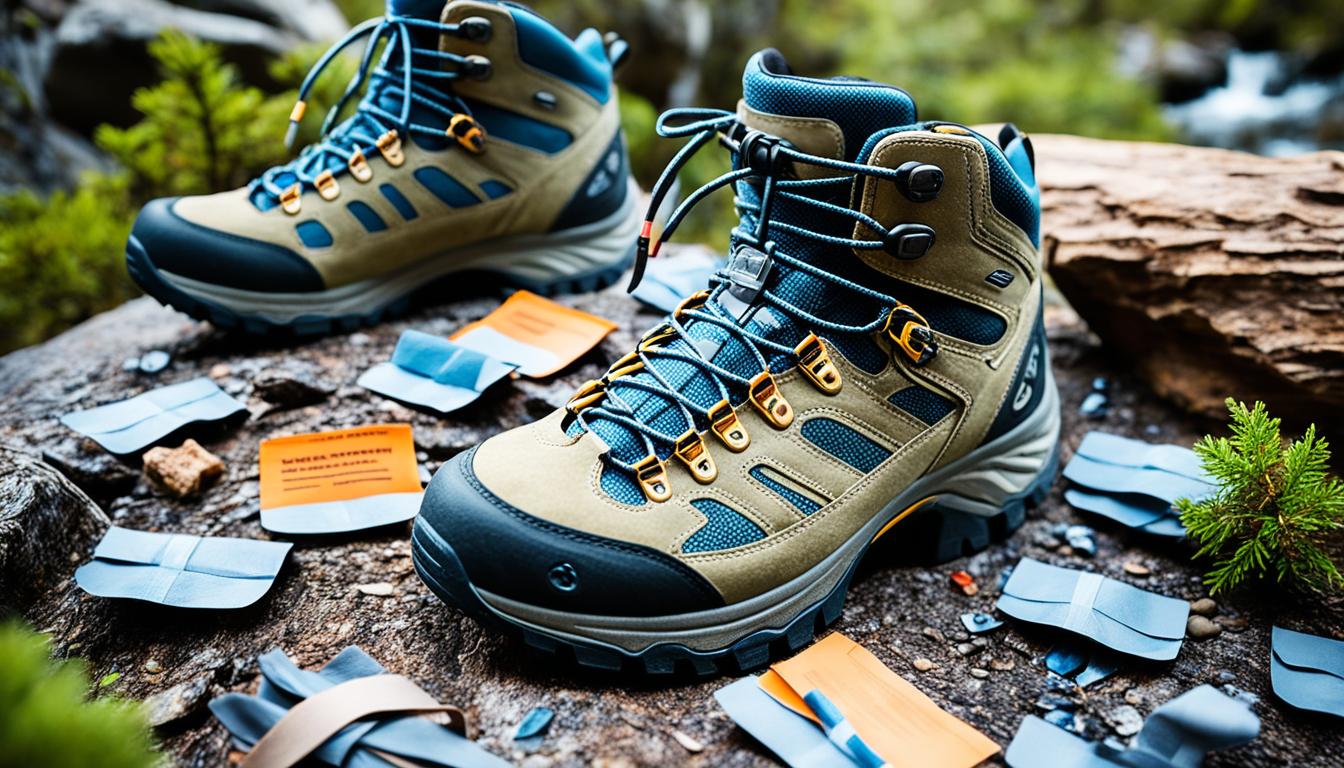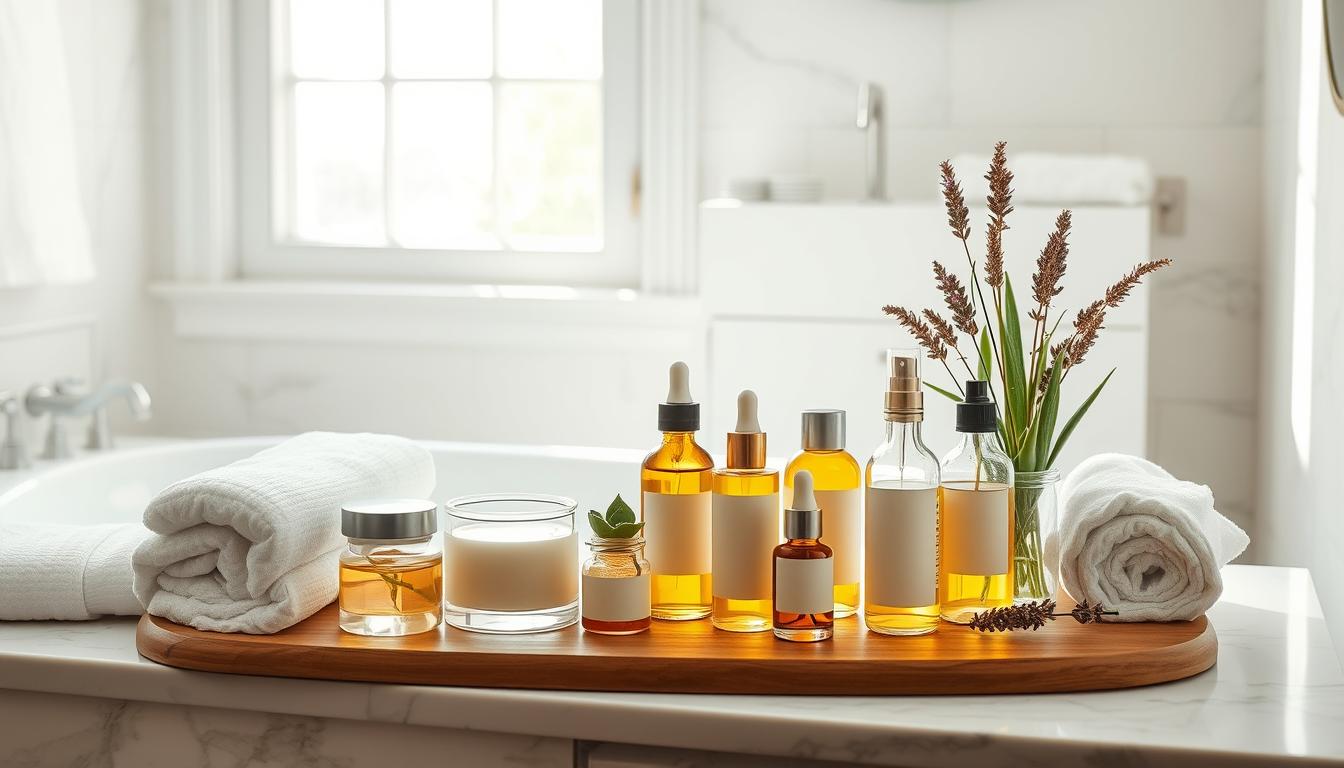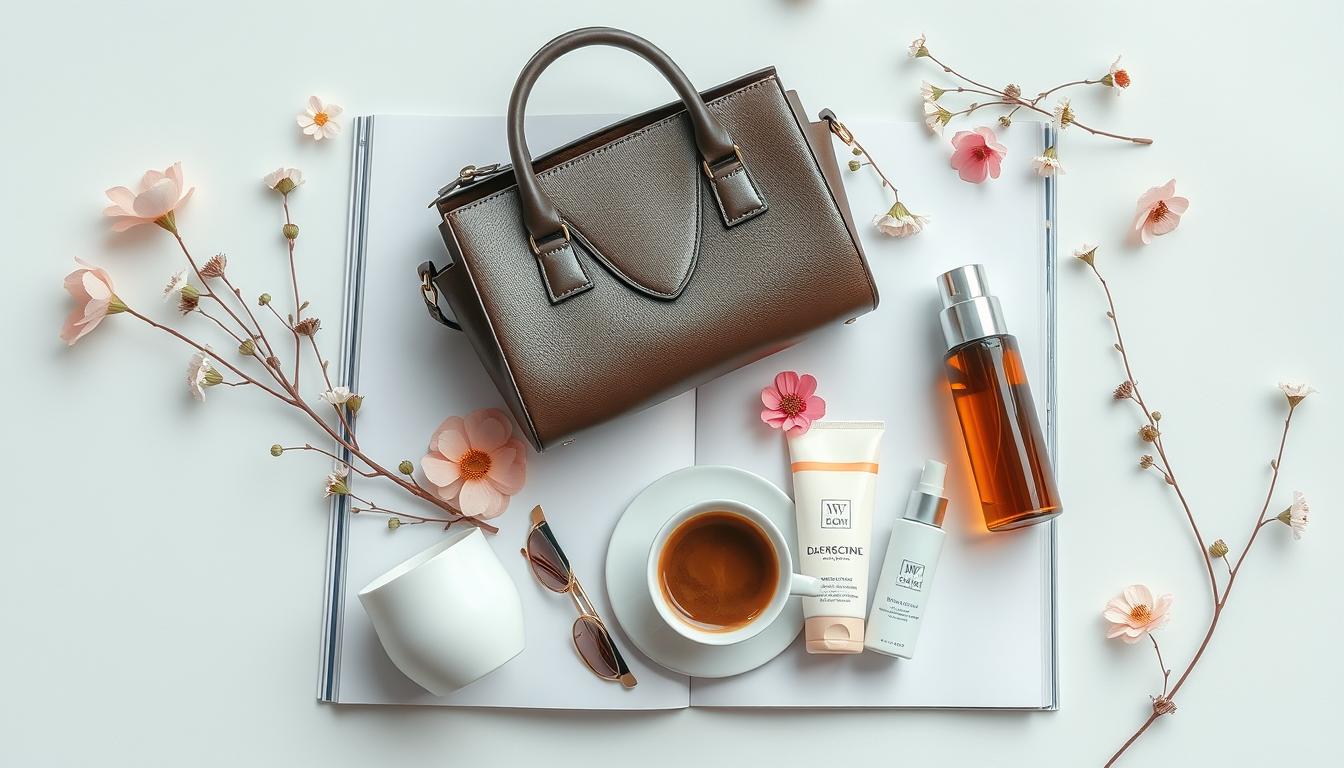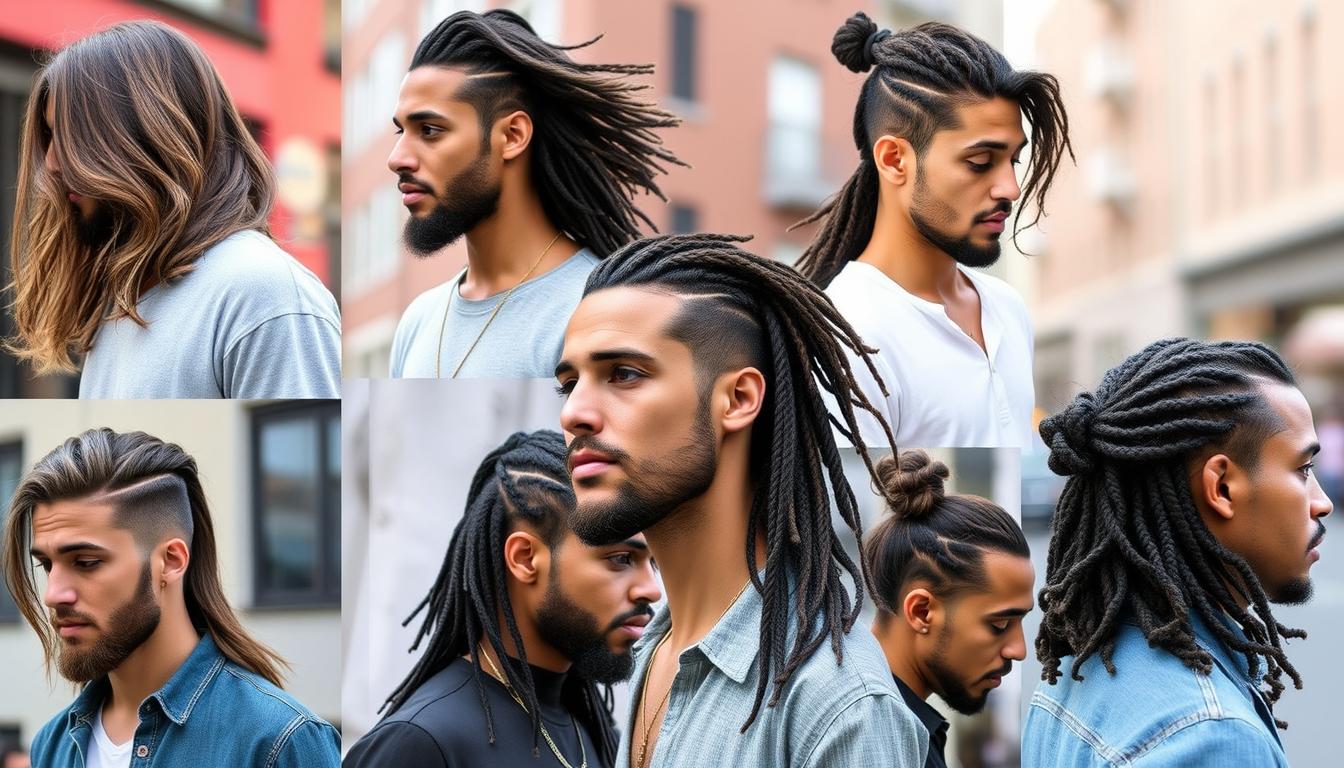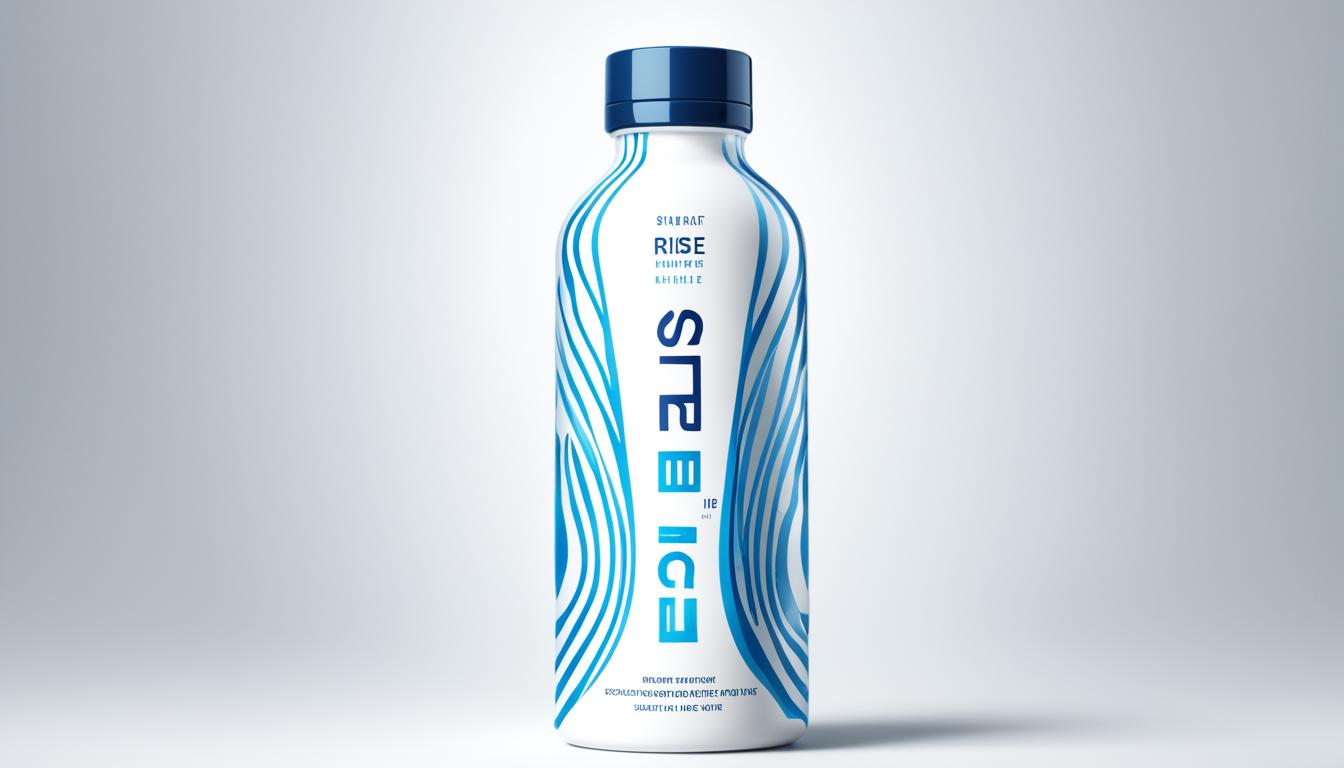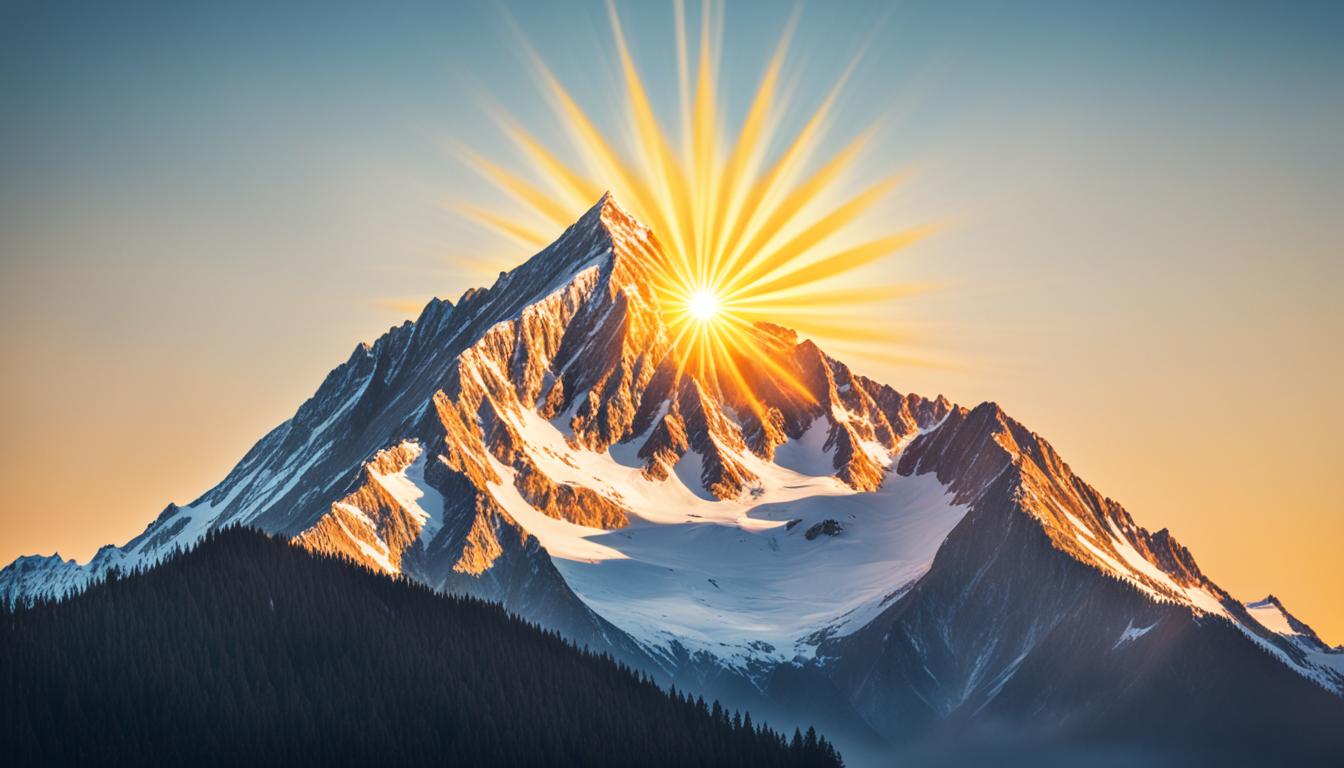Did you know that blisters are a big problem for hikers, hitting about 70% of those who go on long hikes? They might seem like a small issue, but they can make your hike very uncomfortable. Luckily, you can avoid blisters with the right steps. This way, you can hike without pain and enjoy the outdoors more.
Key Takeaways
- Blisters are a common hiking injury that can be prevented with proper footwear and foot care
- Choosing the right hiking boots and breaking them in is crucial to avoid blisters
- Wearing moisture-wicking socks and using techniques like sock liners can help keep your feet dry
- Addressing hot spots before they turn into blisters can improve your hiking comfort
- Gradually building up your hiking mileage can toughen your feet and prevent blisters
The Importance of Proper Footwear
Preventing blisters while hiking begins with the right footwear. Your hiking boots or shoes are key to protecting your feet. They must fit well, allowing your toes to move, and have breathable, waterproof materials for blister-free hikes.
Choosing the Right Hiking Boots
Finding the right fit is crucial. Hiking boots should be a half-size larger than your everyday shoes because feet swell during hikes. Trying on several options is a good idea since different brands fit feet differently. Look for boots with good support, cushioning, and traction for comfort and security on the trail.
Breaking In Your Hiking Boots
It’s important to break in new hiking boots to prevent blisters. Wear them on short hikes or at home before longer trips. This helps soften the materials and shape the boots to your feet, reducing friction and blisters. Spend time breaking in your boots for a comfortable, blister-free hike.
“Proper footwear is the foundation of a successful hike. Investing time in finding the right hiking boots and breaking them in can make all the difference in preventing blisters.”
The Power of Well-Fitted Socks
Choosing the right socks is key to avoiding blisters on hikes. Hiking socks are as important as your boots. They should be made of moisture-wicking materials like merino wool to keep your feet dry and comfy.
Moisture-Wicking Socks for Dry Feet
Switching to lightweight, zero-drop trail runners helped prevent blisters. Using liner socks to draw moisture away from your feet also helps. In a marathon test, Wool-It showed better protection against blisters.
For extra protection, try lubrication gels like Sportslick, Gurney Goo, Body Glide, and HikeGoo. These have been proven to prevent chafing and blisters.
| Sock Type | Moisture Wicking | Blister Prevention |
|---|---|---|
| Merino Wool Socks | Excellent | Highly Effective |
| Moisture-Wicking Socks | Excellent | Highly Effective |
| Polypropylene Liner Socks | Excellent | Highly Effective |
Choosing the right moisture-wicking socks and boots can greatly lower the risk of blisters. This makes hiking more comfortable and fun.
Lacing Techniques for Blister Prevention
Properly lacing your hiking boots is key to preventing blisters. It helps reduce friction and keeps your feet secure. This can protect your feet from painful blisters.
It’s important to find a balance between a snug fit and being able to move easily. Boots that are too loose can cause your foot to move around, leading to blisters. Boots that are too tight can cut off circulation and cause discomfort.
The “heel lock” or “ankle lock” lacing is a great way to prevent blisters. This method skips the eyelets near the ankle and uses a criss-cross pattern. It keeps your heel in place, reducing friction and blisters.
Another good technique is to lace your boots tighter at the ankle but looser at the toes. This gives a secure fit at the heel and ankle while letting your toes move. It helps prevent rubbing and blisters.
Try different lacing techniques to see what works best for you and your boots. Pay attention to how your feet feel during hikes. Adjust your lacing as needed for a comfortable and blister-free hike.
Keeping Your Feet Dry and Debris-Free
Preventing blisters while hiking means keeping your feet dry and free from debris. Hiking boots that are waterproof can really help. They protect your feet from the elements and keep them dry and comfy. But, it’s also smart to use hiking gaiters too.
Gaiters are like sleeves for your boots and legs. They keep sand, dirt, and other stuff from getting into your shoes. This can cause painful hot spots and blisters. So, by using gaiters, you can keep your feet dry and safe from irritation.
If your feet get wet, like from rain or sweat, make sure to dry them out. Change into dry socks during breaks. Wet feet can quickly cause blisters, so it’s important to let them dry and breathe.
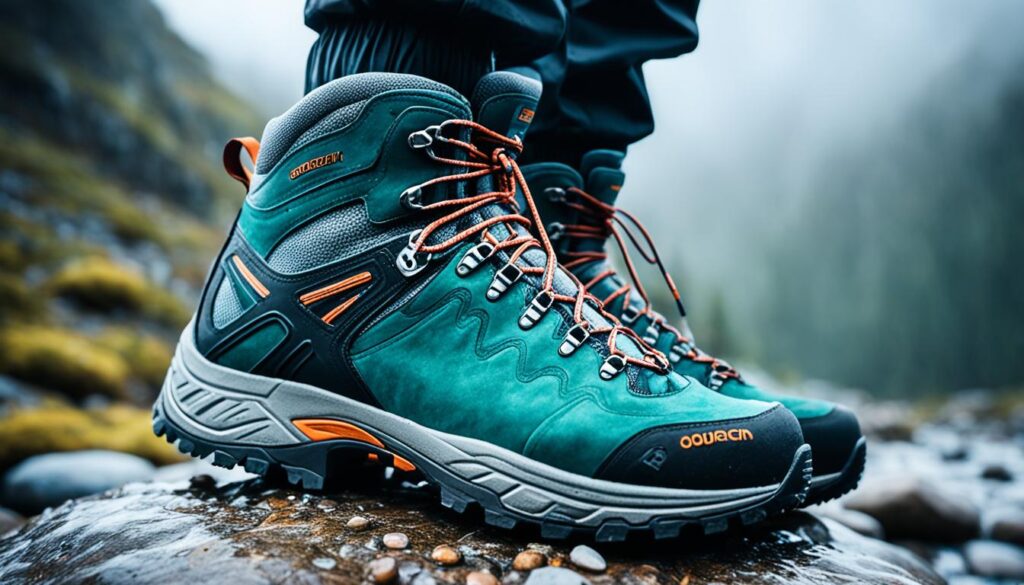
Keeping your feet dry and free from debris is key to avoiding blisters. Use waterproof boots and gaiters and take care of your feet on hikes. This way, you can hike with confidence and comfort.
Addressing Hot Spots Before They Become Blisters
Preventing blisters on hikes means watching out for “hot spots”. These are red, tender areas where skin starts to get irritated from friction. If you feel a hot spot, stop and fix it before it turns into a blister.
To stop hot spots, put a protective layer over the area. Use Leukotape or a blister prevention pad to cushion it. This reduces friction and stops the hot spot from getting worse.
Most blisters happen on the second day of a hike. So, watch your feet closely, especially with new hiking boots. Catching hot spots early can prevent blisters later.
Keep first aid supplies like moleskin, GlacierGel, and adhesive bandages handy. These items make fixing hot spots easy. Tending to them quickly stops blisters from happening.
Preventing blisters is crucial. By dealing with hot spots early, you keep your feet safe and blister-free. This lets you enjoy your hike more.
Taping and Blister Pads for Problematic Areas
Using taping and blister pads can really help prevent blisters on hikes. These methods are great for areas that often rub and get hot. They can protect you from painful blisters.
Hapla Band for Low-Risk Areas
Hapla Band is a stretchy, adhesive tape perfect for low-risk foot areas. It fits your skin well, stopping rubbing and irritation. It’s great for the tops of your toes or the sides of your heels, where blisters can easily form.
Compeed Blister Pads for Hot Spots
If a hotspot appears, try a heavy-duty blister pad like Compeed. These pads protect the area, cushion pressure, and can even drain blisters. Using a Compeed pad early can stop a blister from forming, saving you from discomfort on the trail.
Using blister taping and pads can really help with problem areas. It can lower your risk of getting painful blisters. Taking steps to protect these areas before they become issues can make hiking more comfortable and blister-free.
| Product | Durability | Cost per Mile | Effectiveness |
|---|---|---|---|
| Hapla Band | 125-150 miles | 2 cents per mile | Excellent for low-risk areas |
| Compeed Blister Pads | Up to 300 miles | Varies | Highly effective for hot spots and blisters |
| 2Toms Sports Shield | 100+ miles with Engo Patches | Varies | Increases durability of blister pads |
Preventing foot problems is key for a happy, healthy hike. By using blister taping and pads, you can protect against painful issues before they start.
“How to Prevent Blisters from Hiking”
Hiking can turn into a painful experience if you get blisters. But, you can prevent them with the right strategies. Focus on heat, moisture, and friction to keep your feet blister-free.
Start by picking the right hiking boots and socks. Choose footwear that fits well and offers support. Use socks that wick away moisture, like those made from wool. Also, how you lace your boots can reduce friction and pressure.
It’s important to keep your feet dry and clean. Waterproof boots might make your feet sweat more, which can cause blisters. Instead, pick boots that let air in and manage moisture well. Use gaiters or other gear to keep dirt out of your shoes.
Check your feet often for hot spots that could turn into blisters. Use tape or blister pads on those areas. Products like Hapla Band and Compeed Blister Pads can protect your skin from friction.
Let your feet breathe and recover during your hike. Take off your shoes and socks to air them out and check for any issues. Increase your hiking distance slowly to toughen your feet. Keeping your feet clean can also prevent blisters.
By following these tips, you can avoid blisters and enjoy your hikes more. Remember, preventing blisters is key to keeping your feet happy on the trail.
“Blisters require three conditions to occur: heat, moisture, and friction.” – Hiking Expert
| Prevention Strategies | Key Benefits |
|---|---|
| Proper Footwear Selection | Reduces friction and pressure points |
| Moisture-Wicking Socks | Keeps feet dry and comfortable |
| Lacing Techniques | Minimizes slippage and hot spots |
| Addressing Hot Spots Early | Prevents blisters from forming |
| Allowing Feet to Breathe | Promotes recovery and toughens skin |
Allowing Your Feet to Breathe and Recover
Even the most careful hikers can’t always avoid blisters. That’s why it’s key to let your feet recover. Taking breaks to air out your feet helps prevent more irritation and heals blisters faster.
After a long hike, put on flip-flops or Crocs for a break from your hiking boots. This helps your feet recover by reducing friction and blister risk.
- Change your socks regularly to keep your feet dry and comfortable.
- Elevate your feet during breaks to promote circulation and reduce swelling.
- Gently clean and inspect your feet for any hot spots or irritation.
Your feet work hard to carry you on hikes. So, treat them with care and let them rest and recover. By letting your feet breathe, you’re making them ready for a blister-free hike next time.
| Product | Average Cost | Application |
|---|---|---|
| Flip-Flops | $10 – $50 | Allowing feet to breathe and recover after hiking |
| Crocs | $30 – $70 | Providing comfortable, breathable footwear for post-hike recovery |
“Giving your feet a break by letting them breathe is one of the most important things you can do to prevent and treat blisters.”
Building Up Mileage Gradually
When getting ready for a long hike, it’s key to slowly up your building hiking mileage over time. This helps toughen feet for hiking. Jumping up your distance too fast can cause blisters and foot problems. Slowly getting your feet used to the miles will prevent issues later.
Toughening Your Feet for Long Hikes
Experts with over 30 years of long-distance walking say high-quality boots and socks are a must to avoid blisters. They suggest wearing two pairs of socks. A thin inner pair of polypropylene and a thicker wool outer pair keep your feet dry and safe.
To toughen your feet for long hikes, start with shorter walks and slowly add more distance and time over weeks. This lets your feet get used to it and become stronger. It lowers the chance of getting blisters on longer hikes.
Building up your walking time is also key. Experts recommend removing debris from your boots, proper lacing, and using gaiters to keep your feet dry. Also, invest in waterproof boots and check their waterproofing often to keep your feet protected.
Proper Foot Care and Hygiene
Taking care of your feet is key to avoiding blisters while hiking. It’s important to focus on foot care and hygiene. This keeps your feet healthy and blister-free on your adventures.
Avoiding Moisturizers and Letting Feet Toughen Up
Many think moisturizing your feet helps prevent blisters, but it doesn’t. Soft skin is more likely to blister because it rubs more. Let your feet get tough on their own. Don’t trim calluses unless they’re very thick. Just keep your feet clean and dry for the best hiking foot care and foot hygiene.
Choi et al. (2013) found most blisters happen on the second day of a hike. This shows why avoiding foot moisturizers is key. Let your feet adjust to the trail naturally.
- Avoid moisturizing your feet to let them toughen up naturally.
- Trim thick calluses, but otherwise, leave your feet alone.
- Keep your feet clean and dry to prevent blisters.
By doing these simple things, your feet will be ready for the trails. This reduces the chance of getting painful blisters.

Treating Blisters When They Occur
Even with precautions, blisters can happen on long hikes. It’s important to treat them right away to stop more pain and infection. You should drain any fluid-filled treating hiking blisters and protect the area with proper care.
Draining and Protecting Blisters
For a blister, draining it is key to ease pressure and stop it from getting worse. Use a clean needle to carefully poke the blister, letting the fluid out. Always clean the area with an antiseptic wipe before and after to fight infection.
- Carefully drain fluid-filled draining blisters using a sterilized needle
- Clean the area with an antiseptic wipe to prevent infection
- Apply an antibiotic ointment or cream to the drained blister
- Cover the area with a protective blister protection such as a Compeed blister pad or bandage
Let your feet rest and air out to help blisters heal. Try not to walk on the blistered area until it’s fully healed.
“Proper blister treatment is crucial for a successful and comfortable hike. Don’t ignore those hot spots – address them quickly before they turn into painful blisters.”
Conclusion
To prevent blisters while hiking, you need to take several steps. Start with the right footwear and manage moisture well. Also, pay attention to hot spots early and let your feet recover.
Choosing the right hiking boots and socks is key. Using special taping and lubrication helps too. It’s also vital to keep your feet clean, increase your walking distance slowly, and rest your feet well.
By focusing on foot health and using these methods, you can hike without blisters. This lets you enjoy your journey more and make lasting memories. Be confident in the outdoors and let your feet lead you to new adventures.
